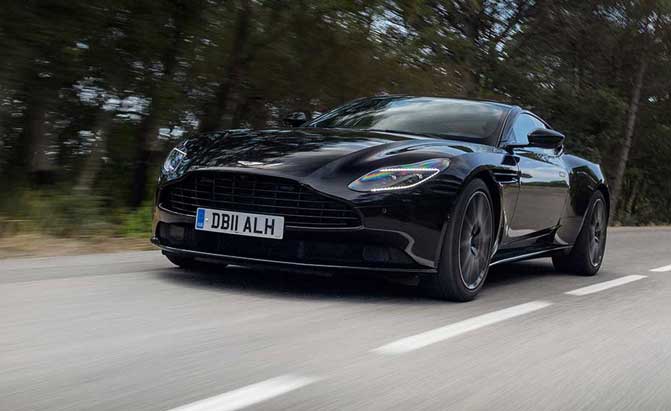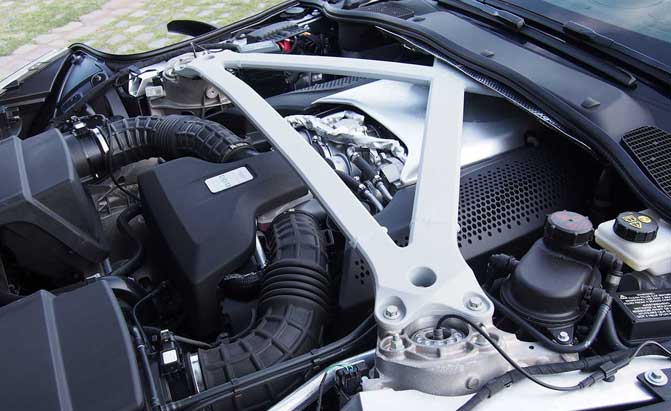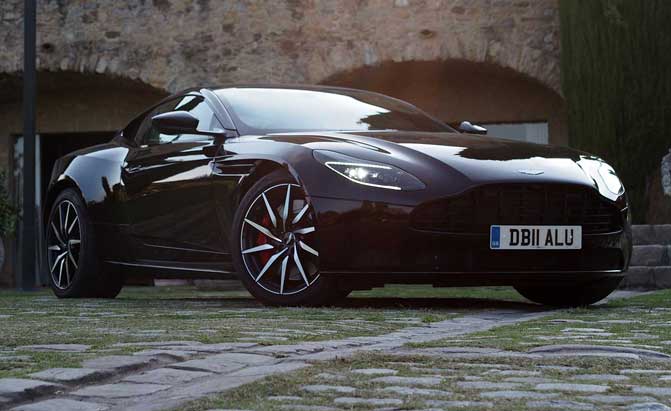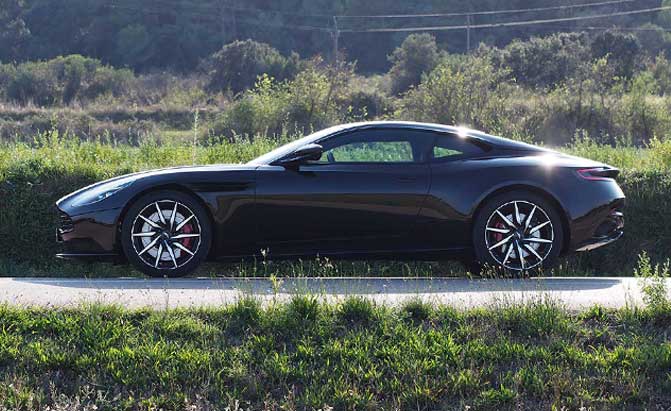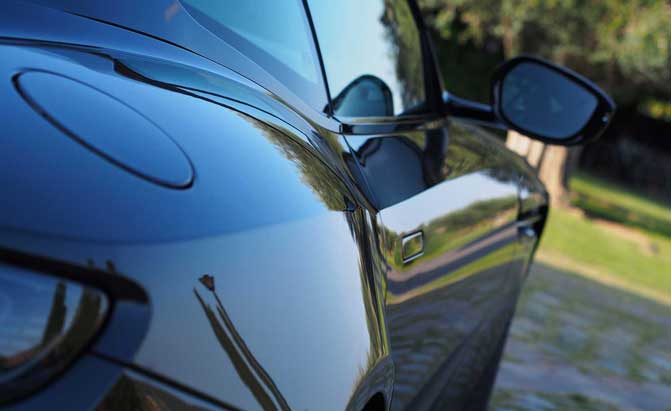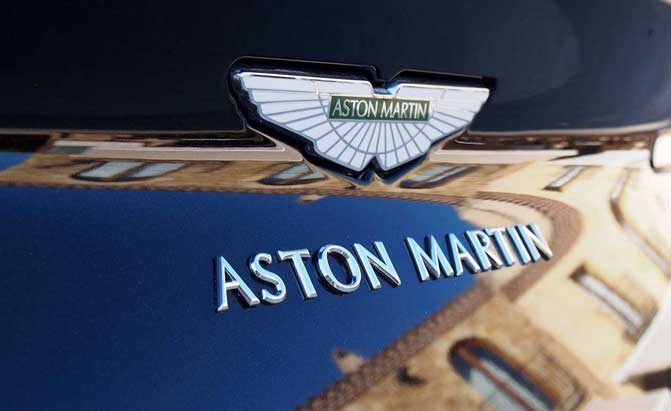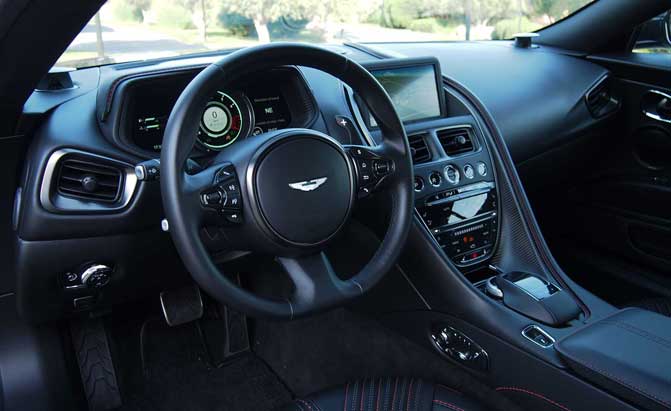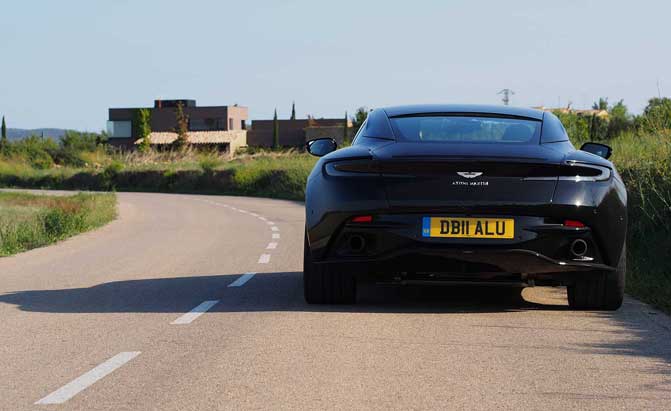The road ahead rises and falls, twists and curves like ribbon unwound on the floor, a narrow strip of tarmac bisecting farmers’ fields, winding through ancient villages, slicing the pastoral Spanish countryside like a piece of aged jamón. The simple task of getting to a main thoroughfare was filled with more anticipation than I’ve experienced in a while.
But what else should you expect from Aston Martin, proud purveyor of automotive indulgence? This enchanting British marque doesn’t just build cars, it brings fantasies to life, rendered in sheet metal, leather and carbon fiber.
Sharing a frontier with both France and the pint-sized Principality of Andorra, Catalonia is a fiercely independent province on Spain’s gleaming Mediterranean coast, a postcard-perfect locale that’s surely one of Europe’s geographic crown jewels.
An embarrassment of riches, this captivating place boasts of myriad landscapes, from sunny beaches and sprawling pastures, to rugged hills and foreboding woodlands; visually, it recalls the San Diego, California area, though with decidedly old-world charm. Surely, this sliver of the Iberian Peninsula is an ideal place to evaluate something exotic, a car with serious pedigree and performance.
Aristocratic Automotive Boodline
Aston Martin’s latest grand tourer, the V8-powered DB11, offers far more than just rapid straight-line speed. Hailing from an aristocratic automotive bloodline, this ultra-luxury coupe also provides exquisite styling and an elegant interior, attributes that are wed to a just-right combination of sport and luxury
Like its more cylinder-rich sibling, this model comes to life at the push of a crystalline button mounted high on the center stack. Briefly tap and release this switch to hear a rousing exhaust note when combustion commences, or hold it down a little longer to enable the quiet-start function to avoid waking your neighbors. Enjoy the visceral thrill of owning an exotic car or play nicely with others? The choice is yours.
Visually separating this DB11 from its 12-cylinder brethren are a few noteworthy differences, though only the most astute of gearheads are likely to notice. These cars feature uniquely finished alloy wheels, are dressed up with dark headlamp bezels, and have two hood vents instead of four. “Aston Martin” is also spelled out with individual letters on the decklid, a first for this company.
ALSO SEE: Top 10 Most Expensive Cars in the World
Styling aside, the biggest alteration, of course, is what’s mounted ahead of this vehicle’s firewall. Open the DB11’s electrically latching, reverse-hinged clamshell hood and marvel at the masterpiece framed by its strut-tower bracing.
AMG = Aston Martin’s Greatest?
The heart of this car is an athletic 4.0-liter V8. With a duet of turbochargers nestled in its valley, an arrangement that helps keep an already broad-shouldered 90-degree engine just a little more compact, this Mercedes-AMG-sourced powerplant delivers 503 horsepower and 498 pound-feet of torque, unquestionably generous figures, but ones that obviously fall short of what’s offered by the big, bad V12. The V12 is rated at 600 and 516, respectively, however, in everyday use, you’ll scarcely notice a difference.
Hand built in Affalterbach, Germany, this V8 will serve Aston Martin in several ways. Aside from offering customers more choice, it should greatly broaden the DB11’s popularity.
“Markets, particularly in Europe, some of them are moving to a more CO2-based pricing structure,” explained Simon Croft, senior manager of global launch strategy at Aston Martin. “[Every] gram that you save, the price of the car is coming down.”
While hardly a miser, the DB11 is still reasonably economical for something so powerful. It’s earned an EU combined fuel economy score of 28.5 mpg, but North American consumption figures haven’t been made available yet.
Offering this AMG engine is also a calculated move
to compete in the bourgeoning Chinese market. “That is why there are so many 4.0-liter V8s on sale [there],” said Croft. Vehicles with engines that exceed that capacity dramatically increase a customer’s tax burden. “In markets around the world, this is going to be the dominant DB11 on sale. In other markets, it just means we can give the customer more choice.”
Behind of the engine’s bellhousing, a carbon fiber prop-shaft routes torque to an aft-mounted eight-speed automatic transmission. A limited-slip differential ensures the rear tires bite tenaciously.
Let there be Light!
Losing a third of its cylinders didn’t just reduce the DB11’s fuel consumption and emissions, it also cut a significant amount of weight. With one drop of the axe, V8-powered examples shed more than 250 pounds (115 kilograms), a massive reduction that results is an advertised curb weight a little less than 3,800 pounds (1,705 kilograms).
Unyieldingly rigid, this car’s bonded and riveted aluminum architecture is identical to the one underpinning 12-cylinder DBs, though many of the bolt-on components have been retuned to take advantage of its weight loss.
The electrically assisted power steering has been tweaked to feel heavier since there’s less mass hanging over the prow. This car’s front calipers have smaller pistons for appropriately balanced braking. The rear subframe bushings are stiffer, ABS tuning has been revised, there are new dampers, and on and on.
ALSO SEE: What’s the V12 Like? Read the Review Here
These revisions result in a vehicle that’s more focused and a bit more willing to rotate with generous throttle applications, or so Aston Martin would have you believe. Without driving the V8 and V12 models back to back, it’s hard to tell if this one is indeed more purposeful or not, though either car is damn enjoyable to pilot.
The Drive
Snaking through the Catalonian countryside, the eight-pot DB11’s steering proved to be ideally weighted and free of any ropiness. Vibration from the road or drivetrain is nil, ditto other undesirable behaviors. This car changes direction quickly and intuitively.
One area that could be improved is outward visibility. The A-pillars are a little on the chunky side and placed in just the right spot to block visibility around corners. Also, the way this car’s hood is contoured makes it hard to see where the exterior limits are, which can make parking – and even lane placement – a challenge, something I learned while navigating Spain’s improbably narrow medieval roads. Every time a large vehicle passed by in the opposite direction, I winced, inching the car closer to the right edge of its lane, the guardrail seeming mere fractions of a millimeter away from the side mirror. Fortunately, nothing scraped, but it always felt imminent.
Get it out into an area of open countryside where you can explore the right pedal’s deeper limits, and this car would take off if it had wings. From a standstill, the DB11 should deliver 62 miles an hour (100 km/h) on a silver platter in four seconds flat. If you’re keeping track, that’s just one-tenth of a tick behind the V12 model’s sprint time. Top speed is 187 miles an hour (301 km/h), 13 mph (21 km/h) off its sibling’s pace.
On public roads, the V12 model feels slightly more effortless, with extra torque down low, plus it sings a more haunting song, a warbling melody that’s glorious. While not quite as musical as its sibling, there’s absolutely nothing wrong with the eight-cylinder car’s performance or voice. Nothing. Its exhaust pipes shout out a menacing growl as the revs build to a crescendo.
Absolute Luxury
Of course, when you’re not white-knuckling it from one Spanish village to another, you can take a break and appreciate the DB11’s sumptuous cabin. Top-shelf materials abound. All the switches and knobs operate with well-oiled slickness, while the Mercedes-Benz-sourced infotainment system is familiar and easy to use.
The Onyx Black DB11 I had the pleasure of driving also featured a few interior extras, inclu
ding woven carbon fiber trim. But unquestionably, the most striking element was brogued leather applied to its seats, door panels and center armrest. Like a high-end men’s dress shoe, this material has a series of holes punched in it that create artful patterns and allow a contrasting color to show through. The look is unlike anything else I’ve seen in the automotive space.
Everything inside the DB11 is as one would expect for a car of this caliber, with front bucket seats that are widely adjustable for excellent comfort. Curiously though, the driver’s side backrest was unnecessarily stiff, feeling as hard as a leather-trimmed slab of marble, though not quite as firm as coach-class seating on Lufthansa. This was not the case with the front passenger’s backrest, which seemed appreciably plusher.
The Verdict: 2018 Aston Martin DB11 V8 Review
The V8-powered Aston Martin DB11 is a welcome addition to this acclaimed family of grand touring automobiles. It’s essentially every bit as sexy, engaging and fleet as its 12-cylinder counterpart, while being a bit more affordable and environmentally friendly.
The car is on sale right now with a base price $201,820, including $2,825 in destination charges ($233,650 Canadian); deliveries in the U.S. are scheduled to start in the fourth-quarter of this year. Out the door, my test model cost $213,330, dressed up with nearly $12k in options. Still, this is less than what the most basic V12-powered DB11 goes for; they kick off around $215k.
Admittedly, there’s not much of a pricing delta between these two models, at least in North America; in Europe and China, it’s likely another story. As the old saying goes, in for a penny, in for a pound; if you’re spending this much money, you may as well opt for the 12-cylinder car, which is slightly more thrilling thanks its soundtrack, though this is no knock against the V8-powered DB11. It excels in nearly every way and would be the centerpiece of any enthusiast’s garage.
Discuss this story on our Luxury Lifestyle Forum







